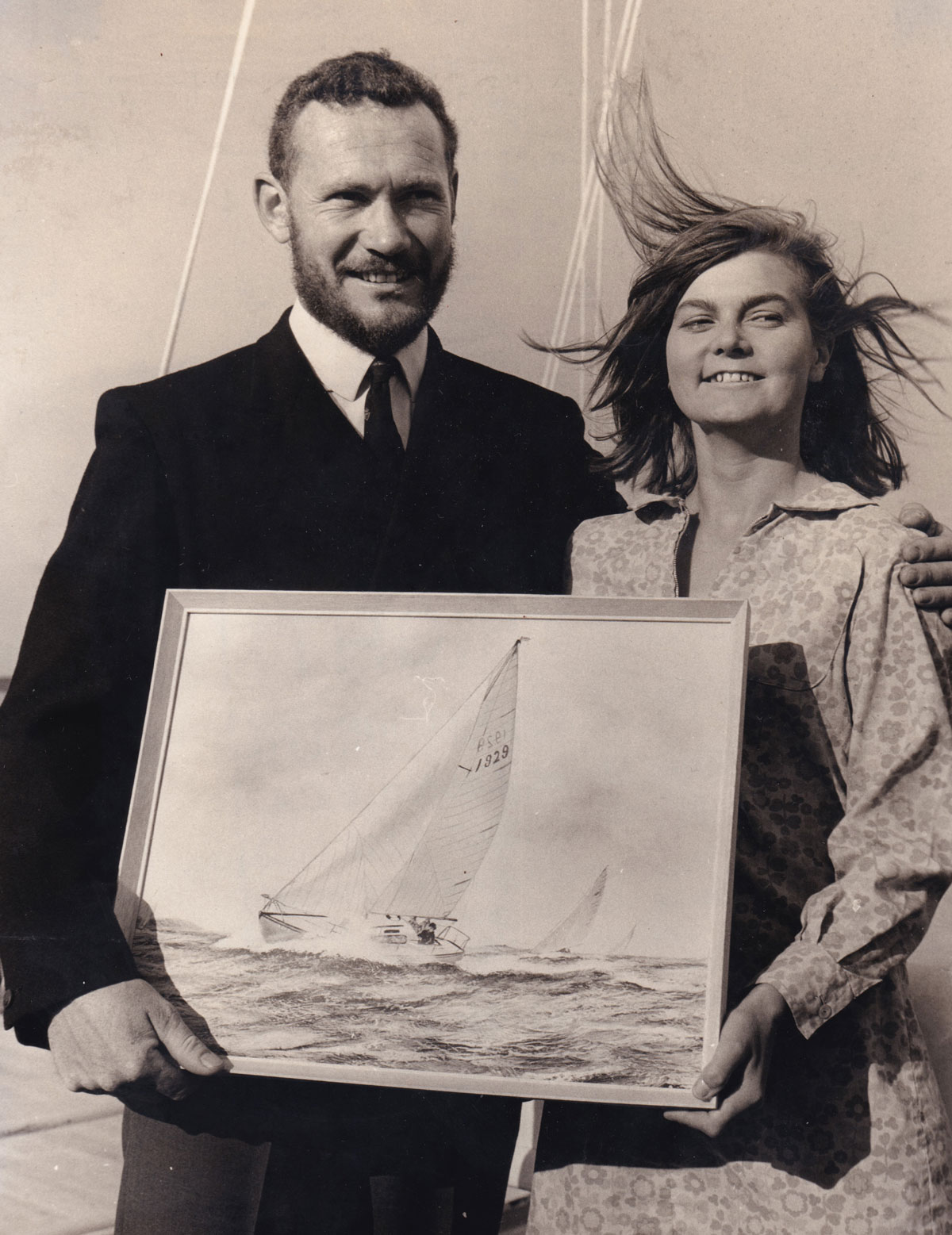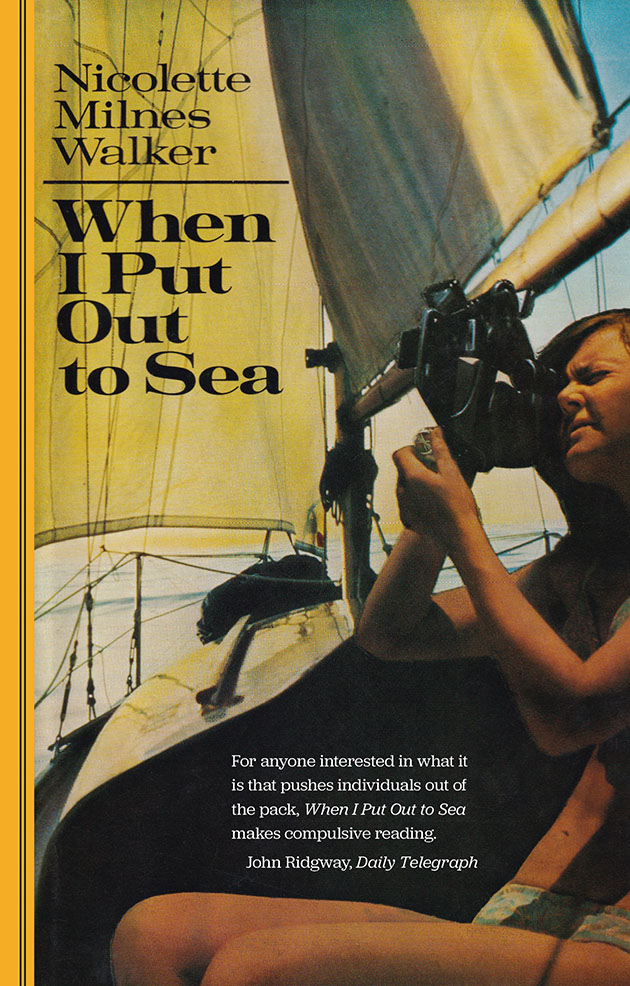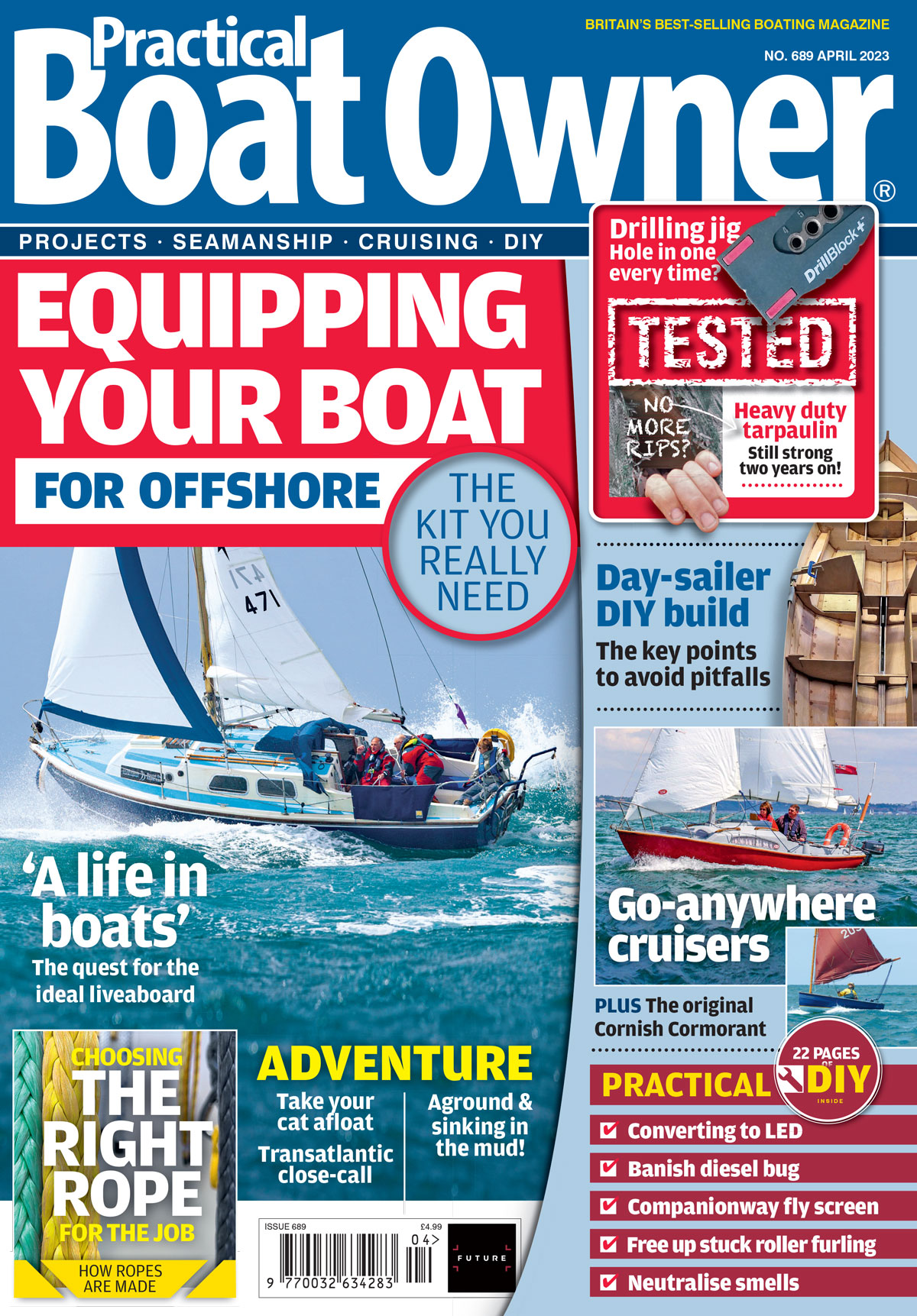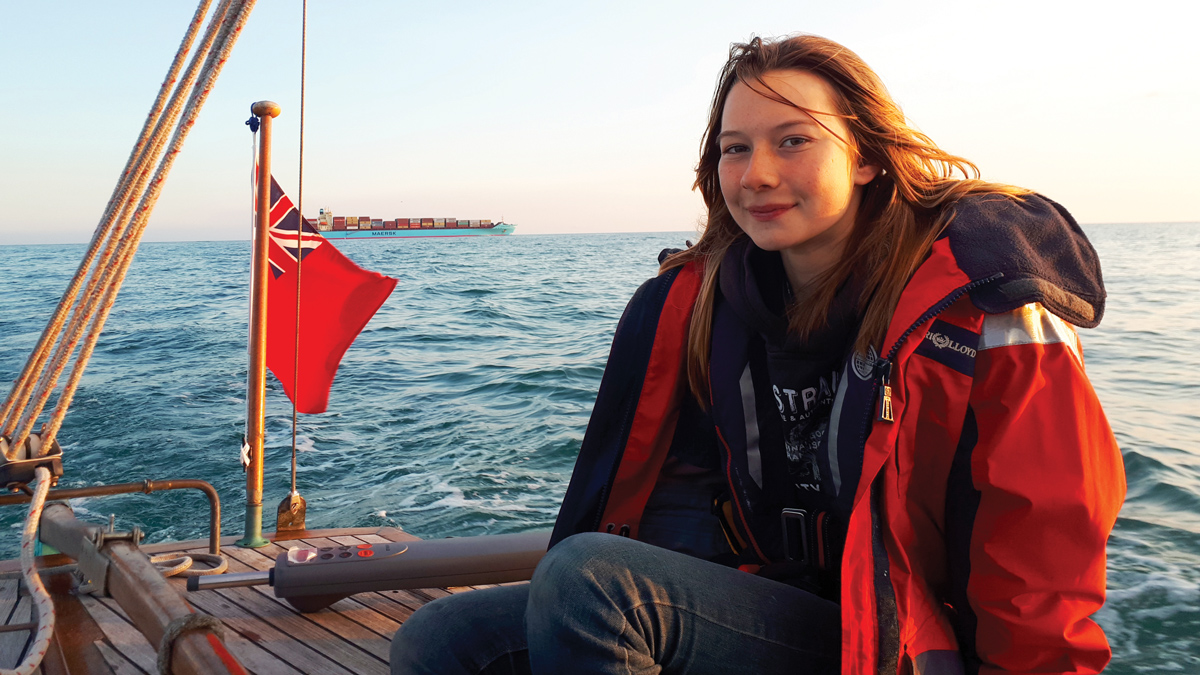Nicolette Milnes Walker was the first woman to sail solo and non-stop from the UK to the USA. Julia Jones charts her trailblazing achievement
Nicolette Milnes Walker was 28 when she set herself to be the first woman to sail solo and non-stop across the Atlantic from the UK to the USA.
This was in 1971.
Ann Davison had crossed single-handed in 1952 in her 24ft wooden yacht Felicity Ann but she’d taken more of a cruise approach, pausing several times along the way.
It had been a remarkable achievement by a remarkable woman.
Almost 20 years later, Nicolette Milnes Walker was planning something different.

Nicolette Milnes Walker enjoyed fixing gear at sea, as it prevented boredom from setting in. Credit: Getty
Boats and equipment had changed during the boom years of the 1960s.
Like thousands of other people Nicolette had built a Mirror dinghy from a kit. She’d been living in a Bristol University student flat and had to get it out through the window.
By the end of the decade mass production using GRP had revolutionised sailing as a leisure activity.
There was much more stuff on the market and many more people ready to have a go, even if they didn’t have a big bank balance or generations of sailing experience.
Practical Boat Owner, founded in 1967, was just the magazine they needed.
Nicolette Milnes Walker: Spark of an idea
In January 1971 Nicolette had been to the International Boat Show at Earl’s Court and had become fascinated by the variety of equipment available.
The year before she’d sailed to the Azores with friends.
Now she began collecting catalogues, making lists and calculating what she’d need to sail to America alone.
To begin with it was just a game. She was good at planning – her current job was as an industrial psychologist devising experiments that helped test how people in high tech jobs might react under stress.
Gradually her ideas developed from the ‘what if?’ stage to the ‘why not?’

Aziz was the 39th Pionier class racer to be built in the UK. Credit: Nicolette Milnes Walker
There were plenty of negatives. She wasn’t a hugely experienced sailor.
She could manage a dinghy but had never handled a yacht on her own, though her trip to the Azores had taught her what an Atlantic gale felt like.
She wasn’t a good swimmer but swimming alone in the Atlantic wasn’t going to help much anyway.
She was short sighted, she was female. Should that stop her?
Nicolette had a hunch that there were aspects of women’s inherited experience that might potentially make them more resilient than men.
That was one of the things she wanted to test, with herself as the subject of the experiment.

Aziz was fitted with Hasler Gibbs self-steering gear. The boat didn’t have a stern pulpit so a bracket had to be fitted to support the windvane. Credit: Nicolette Milnes Walker
She wanted to know how she’d react to fear and loneliness: she also wanted the thrill of being first to succeed.
Imperceptibly she found she’d reached a decision: “I could find no reason for not going. So I decided to go.”
She resigned from her job and borrowed enough money to buy a small yacht.
She chose a second hand Pionier, a very early GRP design by EG van der Stadt. Built in 1963 and named Aziz (from its first owner’s polo pony) it would probably be considered unsuitable for single-handed distance cruising today.
Instead of the traditional long keel, giving good directional stability, Aziz had a fin keel and spade rudder.
Later, Nicolette described how difficult it had been to keep Aziz steady under engine, ‘a moment’s inattention and she whips round in a semi-circle’.
It became ‘quite a laugh’ to dash down to the cabin for a cigarette and matches and get back to the helm before Aziz shot off in the wrong direction. (In 1971 even a doctor’s daughter could smoke without shame!)
Continues below…
Ann Davison: transatlantic first
Ann Davison became the first woman to sail across the Atlantic solo when she arrived in Dominica in January 1953.…
Jessica Watson – the real sailor behind the True Spirit film
Whilst the new Netflix True Spirit movie was being filmed, celebrating Jessica Watson's real-life teenage solo, non-stop global circumnavigation, the…
Channel Hopping: Wonderful Wharram Women
Our resident YouTube fanatic marvels at the generations of women who have crossed (and continue to cross) oceans on Wharram…
Katie McCabe: “How I sailed solo around Britain, aged 14”
I had lived on a boat since I was two weeks old aboard Ros Ailither, a 50ft fishing trawler my…
Transformative
Under sail, however, Aziz responded well to a Hasler Gibbs servo-pendulum steering system, another 1960s innovation that was transforming life for the single-handed sailor.
Nicolette made clear, practical decisions about what not to take – such as a spinnaker.
She’d never used one and guessed that twin headsails, poled out, would be much easier to handle.
She chose to prepare and set out from a small yachting centre – Dale in Pembrokeshire – rather than the more conventional south coast centres which might be too busy to bother with an enterprise like hers.
Setting out from Milford Haven also avoided most of the busy Channel shipping.

Nicolette Milnes Walker decided to leave from Dale in Wales, rather than a South Coast yachting centre. Credit: Nicolette Milnes Walker
Once she was away from land, Nicolette remained practical and analytical. She was given a tape recorder into which she spoke each day.
When she listened to these after the voyage, she realised they were much more revealing than her careful diary entries.
Her subsequent book, When I Put Out to Sea, reveals that she was hard on herself, getting angry over what she regarded as ‘stupid’ errors.
She also enjoyed using her initiative to fix her mistakes.
Later she would joke that she’d almost looked forward to things going wrong at sea because having something to fix relieved the monotony.

Nicolette Milnes Walker sets off on her Atlantic crossing. It was only the second time she has sailed solo over any distance. Credit: Nicolette Milnes Walker
She was also young and fun-loving. She enjoyed the freedom of summer days without clothes.
She daubed herself with scent, dressed up and drank brandy for special, solitary celebrations. (She also used the alcohol to fix her steering compass.)
All the time she was observing herself as the subject of her own experiment.
She wondered whether she would lose her voice if she spent time without speaking to people; she noticed she was “thinking very loudly”.
She endured periods of despair and believed she was facing death.
Party time
When she arrived safely at Newport in Rhode Island, she changed into a mini-dress and flung herself into celebration.
Yet it wasn’t long before she was noticing that this also had an effect on her personality.
It’s probably not surprising that after a period of celebrity –press articles, TV interviews, Women of the Year lunches, Desert Island Discs, an MBE – she decided that it was time for a new challenge… which turned out to be raising twin daughters, Rosalind and Frances.
When Nicolette decided to retire from the fray, she did so thoroughly, packing away her notes, cuttings, photos and memorabilia and setting herself up not only to make a success of motherhood, but also to be a successful bookseller with her husband, Bruce Coward, at the Harbour Bookshop Dartmouth.

Being presented with a painting of Aziz by Robin Knox-Johnston. Credit: Nicolette Milnes Walker
She never spoke about her achievement and most people have never heard of her.
Now she is about to be 80 and has been persuaded to unpack some of those packages as a new edition of her book is published.
She will give a single talk in Dartmouth in aid of the RNLI.

When I Put Out to Sea is released on 15 March 2023
She has written a brief Afterword. “I have often been asked to give a talk about the crossing, but always declined, as I felt that I was no longer that girl who had set out with such excitement to challenge herself. “But re-reading this book after very many years makes me realise that I am indeed not that girl, but a new version of her. I have changed my opinions on a number of the views expressed in the book. But I do remember her and I know that her experience gave me the confidence to accept who I am and to be delighted in the life I have.
“That seems almost as important an achievement as sailing the Atlantic.”
When I Put Out to Sea by Nicolette Milnes Walker is republished by Golden Duck, priced £11.99, www.golden-duck.co.uk and is also available on Amazon Kindle.
Nicolette Coward (nee Milnes Walker) will be giving a talk on her 1971 Atlantic crossing at The Flavel Centre, Dartmouth, on 28 March 2023.
Buy When I Put Out to Sea by Nicolette Milnes Walker at Waterstone (UK)
Note: We may earn a commission when you buy through links on our site, at no extra cost to you. This doesn’t affect our editorial independence.
This article has been updated to correct the name of Ann Davidson’s boat
Enjoyed reading Nicolette Milnes Walker: Atlantic pioneer?
A subscription to Practical Boat Owner magazine costs around 40% less than the cover price.
Print and digital editions are available through Magazines Direct – where you can also find the latest deals.
PBO is packed with information to help you get the most from boat ownership – whether sail or power.
-
-
-
- Take your DIY skills to the next level with trusted advice on boat maintenance and repairs
- Impartial in-depth gear reviews
- Practical cruising tips for making the most of your time afloat
-
-








